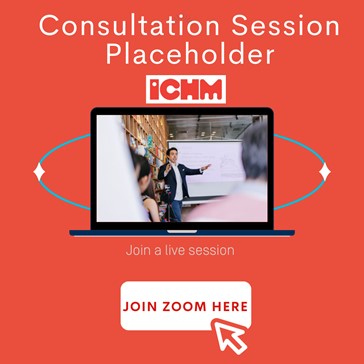Welcome to Topic 5: Employee Lifecycle, Workplace of the Future, Recruitment and Selection. Recruiting the correct employees into the organisation is very important. The right recruitment becomes an investment. Throughout this topic, we will discuss various techniques that inform recruitment and selection.
In this topic you will learn about:
- Strategic human resources management
- War for talent
- Effective selection and placement strategies
- The roles of pay structure and pay for performance.
These relate to the Subject Learning Outcomes:
- Assess the key principles and theories underlying strategic people management and explain how their application enhances organisational and individual performance.
- Evaluate the effectiveness of different approaches of leadership and the relationships between effective people management and organisational performance.
- Reflect on the roles and functions that managers perform in the context of the challenges and risks they experience in the changing environment.
Welcome to your pre-seminar learning tasks for this week. Please ensure you complete these prior to attending your scheduled seminar with your lecturer.
Click on each of the following headings to read more about what is required for each of your pre-seminar learning tasks.
Read Chapter 16 pp. 658-699 from University of Minnesota 2015, Principles of management, University of Minnesota Libraries Publishing edition.
Read the following web articles:
- Fjell, S 2017, The 7 Stages of the Employee Lifecycle and Why They Matter, Questback.
- Marshall, B 2018, Innovation ALWAYS demands we change the rules, Word Press.
Read Chapter 11: Bright, DS, Cortes, AH, Hartmann, E, Parboteeah, P, Pierce, JL, Reece, M, Shah, A, Terjesen, S, Weiss, JW, White, MA, Gardner, DG, Lambert, J, Parks-Leduc, L, Leopold, J, Muldoon, J, O'Rourke, JS & OpenStax College 2019, Principles of management, Openstax.
Read the following case study, 'Kronos uses science to find the ideal employee' p. 661 from the prescribed text - University of Minnesota 2015, Principles of management, University of Minnesota Libraries Publishing edition.
Task: Go to Topic 5: Forum Activity 1 to review the questions and post your answers. You can access the activities by clicking on the links in the topic. You can also navigate to the forum by clicking on 'MGT100 Subject Forum' in the navigation bar for this subject.
Read and watch the following content.

Strategic human resources management
The corporate world is moving exponentially fast and accordingly, organisations also need to change and follow the trends. In order to achieve change, organisations need to have employees who understand the strategies and are empowered to execute them.
To ensure that organisations recruit and select the correct employees, they need to follow the Strategic Human Resources Approach (SHRM). SHRM makes sure that employees are a key factor in an organisation’s competitive advantage (University of Minnesota 2015).
Organisations require human resources to identify, attract and hire the best available talent for the organisation to achieve its goals. Strategic human resource management requires attracting the right employees to the company, identifying metrics to help employees stay on target to meet the company’s goals, and rewarding them appropriately for their efforts so that they stay engaged and motivated.
Previously considered a support function, human resources is currently considered as a strategic partner in helping a company achieve its goals. A strategic approach to human resources means not just working on the payroll of employees but involves how employees could contribute to the success of the organisation (University of Minnesota 2015).
Key elements of human resources
The four (4) key elements of Human Resources (HR) are shown in the following figure. In high-performing organisations, each element of the HR system is designed to reflect best practices and to maximise employee performance. These include:
- Selection and placement
- Job design
- Compensation and rewards
- Diversity management.
The following video illustrates the design of a job, important considerations when hiring (and keeping) staff or employees and the importance of diversity.
War for talent
The ‘war for talent’ describes the competition between organisations to attract and retain the most able employees.
Talent management is defined as anticipating the necessity for human capital and ensuring a plan is in place to meet it. Talent management goes hand-in-hand with succession planning. Talent management is the process whereby an organisation ensures that employees are recruited and developed to fill each key role within the organisation (Cappelli 2008).
Winning the war for talent means more than simply attracting workers to your company. This implies attracting the correct people for the job. When hiring we should be vigilant because individuals could be attracted to the job due to the pay and other benefits. It is important to identify employees whose aspirations and goals align with the organisation’s goals.
To do this, the organisation must first be clear about the type of employee it wants. Organisations practice this theory with their customers. Sales executives identify specific segments of the universe of buyers to target for selling products. For example, SlimFast shakes targets adults of all ages who are overweight (Erickson & Gratton 2007).
Succession planning in particular is an important component of managing employees. Candidates will often ask about this during a job interview so that can align their personal goals with the organisation. A succession plan ensures that employees have sustainability in the organisation and the right people are retained. It is a talent and organizational improvement initiative that ensures an organisation can grow and thrive in the future. Often it is undervalued but its importance should not go unnoticed. Have you ever thought about your future in an organisation, where you want to be, what roles you want to grow into and when you want to be promoted? You would not be alone in thinking this (Harrison 2022).
Learning task: Finding the right talent
Check out this article on Attracting and retaining the right talent and note five (5) key takeouts in your reflective journal.
You can access the reflective journal by clicking on ‘Journal’ in the navigation bar for this subject.
Effective selection and placement strategies

A vital HR function is to ensure that the correct employee is selected and placed at the right position within the organisation.
Traditionally, organisations have built a competitive advantage by focusing on what they have, such as economies of scale, a well-established brand, or dominance in certain market segments (University of Minnesota 2015).
To make good selection and placement decisions, you need information about the job candidate. Two (2) time-tested methods to get that information are testing and interviewing.
Generally, at an interview, the candidate will be requested to describe his/her previous work experience followed by a set of questions that involve the candidate's accomplishments and responsibilities. In the latter part, the questions would move towards job specific questions. This could also be called a situational interview.
Apart from interviews, organisations do conduct test methods to select and place applicants. The tests provided are always job-related. In order for the tests to be effective, it ought to be developed by professionally qualified personnel who have previous experience in occupation testing (Mrosko 2006).
Learning task: Video reflection
Check out these videos from Linkedin -5 Ted Talks that every recruiter should watch.
Note five (5) key takeouts in your reflective journal.
The roles of pay structure and pay for performance
We might think of pay as the “total reward” we get from completing our work. Payment systems and pay levels can be quite complex as there are many components to consider (University of Minnesota 2015).
Payment methods to employees can be direct or indirect.
Indirect payments could include nonmonetary payment methods and do not include tangible value. Nonmonetary payments could take the form of job security, opportunity to grow, praise and recognition.
Direct payment refers to an employee’s salary. Direct payment can refer to annual salary or any other performance-based pay that an employee receives.
Setting pay levels
Setting the pay level for positions is an extremely challenging task, but extremely important. It is important to consider the pay level is fair when compared to other employees in the same position holding the same level of responsibility. If the pay provided by an organisation is low when compared with other organisations in the same field of work it is going to be the last choice of employment unless there are other benefits to compensate for the low pay rates.
To ensure employees are accountable for what they are paid to do, managers along with the employees themselves will design performance targets. The targets have accompanying metrics which allows the managers to manage individual performances (Field 2008). For example, for a personal trainer this may be measured by the number of new clients brought into the gym.
Pay for performance
As the title suggests, pay for performance means that pay is directly linked to the employee's performance in meeting specific business goals or objectives. For example, a manager will set goals with their employees and be held accountable. This approach has several benefits: employees are more engaged, earn more without hurting the company’s bottom line, reduce employee turnover, improve company culture, and reduce micromanagement (Mosca 2021). Of course, that doesn’t mean it is the way to go for all organisations, but it certainly has its benefits.
Learning task: Pay for performance article
Check out this article What is an employee pay-for-performance compensation plan?
Note three (3) key takeouts in your reflective journal.
Workplace of the future
What do we mean when we say “workplace of the future”? When we look at this from a management perspective, we know that change is inevitable, and it means dealing with the change and being prepared for it. PWC (2018) compiled a report on the workforce of the future and found that technological advances and innovation will play a significant role in productivity and impact the availability of work. Employees will need to be adaptable, resilient, and open to learning new skills. Further research shows that employees are seeking a more flexible workplace, primarily due to changing demographics and the impact of the pandemic (Haugen 2013). So in an era marked by rapid changes in artificial intelligence and automation, what does it mean for jobs, talent, and recruitment? Improvements in technology show that employee’s productivity can improve, but roles that involve managing people will see a lesser impact. New jobs will be created with this new technology, and wages will increase. Organisations and their employees will need to be prepared for the rapidly evolving future of work. New skills will be in demand and traditional approaches to work will be challenged (Manika et al 2017).
This topic looked at the role of human resources in an organisation, focusing on the employee lifecycle, workplace of the future, and recruitment and selection. Hiring the right talent can be essential in creating a competitive advantage for an organisation, but not all organisations do this well. Identifying the needs and specifics of a job, developing a pool of candidates, and assessing the candidates to fit with the organisation are just a few steps in this recruitment process (Bright et al 2019). In addition, different pay approaches exist, such as a pay-for-performance strategy. Organisations must examine the pros and cons of their pay approaches to ensure employees are rewarded and recognised effectively.
Knowledge check
Complete the following two (2) tasks. Click the arrows to navigate between the tasks.
Key takeouts
Congratulations, we made it to the end of the fifth topic! Some key takeouts from Topic 5:
- SHRM is becoming increasingly important in organisations because today’s economy requires employees to contribute ideas and be engaged in executing the organisation’s strategy.
- All the elements of HR—selection and placement, job design, compensation and rewards and diversity management—need to be aligned with the organisation’s strategy.
Welcome to your seminar for this topic. Your lecturer will start a video stream during your scheduled class time. You can access your scheduled class by clicking on ‘Live Sessions’ found within your navigation bar and locating the relevant day/class or by clicking on the following link and then clicking 'Join' to enter the class.
Click here to access your seminar.
The learning tasks are listed below. These will be completed during the seminar with your lecturer. Should you be unable to attend, you will be able to watch the recording, which can be found via the following link or by navigating to the class through ‘Live Sessions’ via your navigation bar.
Click here to access the recording. (Please note: this will be available shortly after the live session has ended.)

In-seminar learning tasks
The in-seminar learning tasks identified below will be completed during the scheduled seminar. Your lecturer will guide you through these tasks. Click on each of the following headings to read more about the requirements for each of your in-seminar learning tasks.
Work in a breakout room assigned by your lecturer during the scheduled seminar. Discuss the following topic with your peers. Your lecturer will request that you present the findings back to the class.
Complete the following two tasks and write your responses in worksheet 1.
- Identify and explain the factors that need to be considered when setting pay levels.
- Identify the challenges of individual versus team-based pay.
Read the following article The employee lifecycle is about an experience and write your responses also in worksheet 1.
Draw the employee life cycle model and identify key characteristics of each stage. Provide examples where appropriate.
Welcome to your post-seminar learning tasks for this week. Please ensure you complete these after attending your scheduled seminar with your lecturer. Your lecturer will advise you if any of these are to be completed during your consultation session.
Please complete the following questions individually and post your answers in 'Topic 5: Forum Activity 2', after your seminar. You may comment on your peers’ responses as well. Your lecturer will provide comments on your answers on the forum.
- How might a manager go about identifying the skills that the organisation will need in the future?
- Describe the ‘make or buy’ option and how it can be applied to HR.
- How would you go about attracting and recruiting talented workers to your organisation? Suggest ideas you would use to retain stars and keep them happy working for you.
- What skills might an organisation such as a bank need from its employees?
Please complete the following questions individually and post your answers to 'Topic 5: Forum Activity 3', after your seminar. You may comment on your peers’ responses as well. Your lecturer will provide comments on your answers on the forum.
- What kind of information would you include in a job description?
- Do you think it is important to hire employees who fit into the organisation culture? Why or why not?
- List questions that you would ask in a future-oriented situational interview.
- What requirements must personnel tests meet?
- If you were hiring to fill a position overseas, how would you go about selecting the best candidate?
Assignment 2 is a group assignment. Your lecturer will assign you to a group this week. Ensure you have sent a message to your group members and are ready to collaborate on your project. This week you can prepare your draft, group contract and set up a schedule for completing the group work tasks. Reach out to Learning Support for assistance on managing your group work effectively.
Each week you will have a consultation session, which will be facilitated by your lecturer. You can join in and work with your peers on activities relating to this subject. These session times and activities will be communicated to you by your lecturer each week. Your lecturer will start a video stream during your scheduled class time. You can access your scheduled class by clicking on ‘Live Sessions’ found within your navigation bar and locating the relevant day/class or by clicking on the following link and then clicking 'Join' to enter the class.
Click here to access your consultation session.
Should you be unable to attend, you will be able to watch the recording, which can be found via the following link or by navigating to the class through ‘Live Sessions’ via your navigation bar.
Click here to access the recording. (Please note: this will be available shortly after the live session has ended.)

- Carton, AM, Murphy, C & Clark, JR 2015, A (Blurry) vision of the future: how leader rhetoric about ultimate goals influences performance, Academy of Management, 57(6):1544-1570.
- Indeed Editorial Team 2021, How to build pay grades and salary ranges: A complete guide, Indeed.
- Lobosco 2021, The future of work is flexible: 71% of leaders feel pressure to change working models, Linkedin.
- Strack, R 2014, The workforce crisis of 2030 – and how to start solving it now, streaming video, TedTalk.
References
- Bright, DS, Cortes, AH, Hartmann, E, Parboteeah, P, Pierce, JL, Reece, M, Shah, A, Terjesen, S, Weiss, JW, White, MA, Gardner, DG, Lambert, J, Parks-Leduc, L, Leopold, J, Muldoon, J, O'Rourke, JS & OpenStax College 2019, Principles of management, Openstax.
- Cappelli, P 2008, Talent management for the 21st century, Boston. Harvard Business Review.
- Erickson, TJ & Gratton, L 2007, What it means to work here, Harvard Business Review, https://hbr.org/2007/03/what-it-means-to-work-here
- Field, A 2008, 'Do your stars see a reason to stay?', Harvard Management Update, 13(6):1-12.
- Haugen, T 2013, Workplaces of the future: creating an elastic workplace, Resetting Horizons, https://www2.deloitte.com/content/dam/Deloitte/mx/Documents/human-capital/Workplaces_of_the_Future.pdf
- Harrison, C 2022, 5 steps to create a succession plan, Harrison human resources, https://hhr.com.au/succession-planning/
- PWC 2018, Workforce of the future, pwc, https://www.pwc.com/gx/en/services/people-organisation/workforce-of-the-future/workforce-of-the-future-the-competing-forces-shaping-2030-pwc.pdf
- Manyika, J, Lund, S, Chui, M, Bughin, J, Woetzel, J, Batra, P, Ko, R & Sanghvi, S 2017, jobs lost, jobs gained: what the future of work will mean for jobs, skills and wages, McKinsey & Company, https://www.mckinsey.com/featured-insights/future-of-work/jobs-lost-jobs-gained-what-the-future-of-work-will-mean-for-jobs-skills-and-wages
- Mosca, L 2021, 6 reasons why pay-for-performance is a game changer, Forbes, https://www.forbes.com/sites/louismosca/2021/06/07/6-reasons-why-pay-for-performance-is-a-game-changer/?sh=47e789d571b7
- Mrosko, T 2006, 'The personnel puzzle: Pre-employment testing can help your bottom line', Inside Business, 8(8):60-73.
- University of Minnesota, 2015, Principles of management, University of Minnesota Libraries Publishing Edition, http://open.lib.umn.edu/principlesmanagement/

